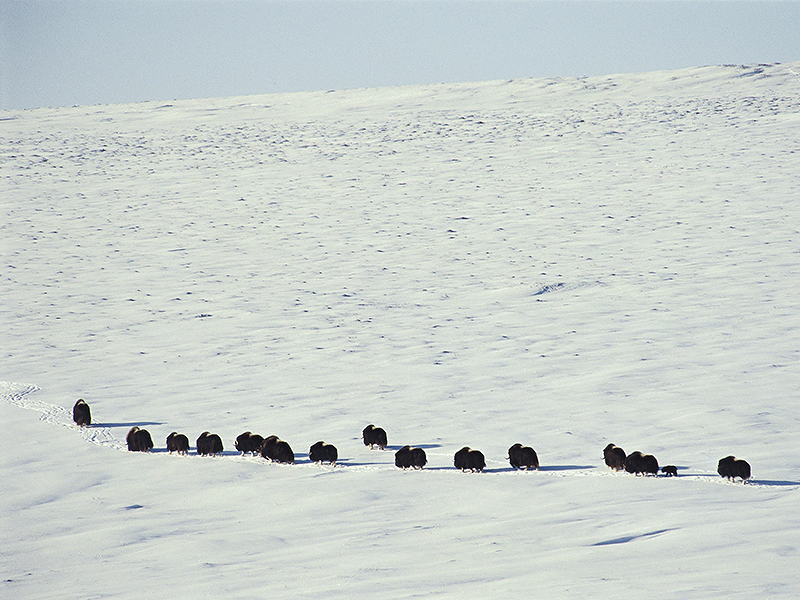
Musokox with Calf | Oil and the Caribou | 2001 | 18 in. x 24 in.
Early May 2001, foothills of the Brooks Range Mountains, along the Canning River, Arctic National Wildlife Refuge. Fourteen adult muskox and a newborn calf, likely a day or two old, migrate from the foothill of the Brooks Range Mountains to the coastal plain. In my first book, Arctic National Wildlife Refuge: Seasons of Life and Land, I wrote: “During the past several years, the coastal plain experienced deeper snow and a later spring thaw than usual, a phenomenon scientists believe is the result of climate change. The deep snow has severely impacted several species at the Refuge, of which the most notable are the caribou and the muskox. When the snow is deep on the coastal plain, muskox find it difficult to forage for food and move to the foothills, where they can feed on willow twigs and other growth on the windblown ridges. However, during calving time (mid–April to mid–May) they are vulnerable to grizzly predation in the foothill areas and must go to the coastal plain to protect their calves.” Besides deeper snow, there is winter rain (another recent climate change phenomenon in the Arctic) followed by freezing, which creates hard ice crust on the tundra that muskox is unable to break through to find food. By the time my second book, Arctic Voices: Resistance at the Tipping Point was published in 2012, all the muskox were gone from the Arctic National Wildlife Refuge.